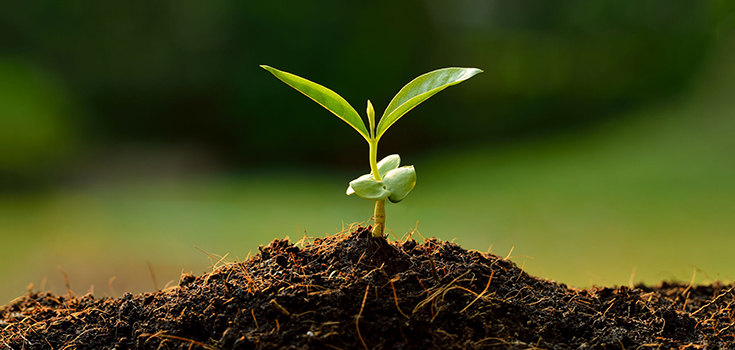Researchers: Diversity in Soil Imperative for Supporting Ecosystems
Researchers: Diversity in Soil Imperative for Supporting Ecosystems
Earthworms enrich soil; pesticides harm it
Healthy soil contains billions of tiny microorganisms that help plants to thrive and our food supply to remain abundant.
Healthy soil contains billions of tiny microorganisms that help plants to thrive and our food supply to remain abundant. A paper, published in Nature Communications , used large-scale data comparisons of soil from 78 global drylands and from 179 locations across Scotland to study diversity of soil microbiota . The researchers found that diversity is absolutely imperative for supporting ecosystems.
With high diversity of microbiota, the soil can function more efficiently and provide a multitude of services. This single factor turned out to be more important than annual rainfall, altitude, or temperature. Loss of microbial diversity resulted in reduced multi-functionality, including soil fertility and food production. Soil biota is essential to ecosystem functioningbecause it breaks down organic matter, enables chemical elements to be reused, and fixes nitrogen, which is necessary for nutrients in the ecosystem.
Earthworms are Vital for Healthy Soil
The mass application of pesticides in the industrialized agricultural model is also harming our soil and water. For instance, a 2015 studydemonstrated that glyphosate, the active ingredient in Roundup, “ reduces activity and reproduction” some earthworms and “increases soil nutrient concentrations to dangerous levels.” Earthworms are often studied in respect to soil health since they consume it directly. The study found “that the surface casting activity of vertically burrowing earthworms ( Lumbricus terrestris ) almost ceased three weeks after herbicide application,” though activity of soil dwelling earthworms was not affected.
Another study on wormsfound that chronic and acute exposure to glyphosate and Mancozeb ®promotes neurodegeneration in GABAergic and DAergic neurons in Caenorhabditis elegans, a type of roundworm found in healthy soils.
In 2014, researchers also found thatearthworms exposed to fungicides in conventionally farmed soil are much less healthy compared to worms living in organically farmed land. This is just one example of how organic farming can save our soil.
Earthworms are an intrinsic part of soil biota, providing support for important ecosystem functioning. An earthworm’s burrows, which delve deep into the soil, create pores for moisture and oxygen to travel, and their waste becomes part of the soil structure. The worms also break down dead organic matter and incorporate new organic matter into soil systems. Their health is key in determining the health of soil, and thus our overall food supply.
Chemical-intensive agricultural practices kill the soil and harm the life within it, like earthworms. This effect then travels up the food chain–harming grazing livestock, birds, bees and other pollinators, and eventually us.
Read: GM Soil Suffocates Soil, Retired Scientist Says
The study on microbial diversity in soil concludes with an important message:
“The message for scientists, policy makers, educators and organizations involved in understanding biodiversity patterns, microorganisms and ecosystem functioning is clear: losses in microbial diversity derived from human activities and climate change will reduce the rates at which multiple ecosystem functions and services are being maintained.
By providing evidence for the relationship between microbial diversity and multifunctionality, our findings advance key ecological topics such as biodiversity–ecosystem functioning relationships in microbial communities.
These findings emphasize the need to develop approaches and policies to protect soil microbial diversity from global environmental drivers such as land use, nitrogen enrichment and climate change, so that the multifunctionality of terrestrial ecosystems is to be preserved for future generations.”
In short, if soils are not protected, we could experience a $25 billion annual global lossof agricultural productivity.
| About Christina Sarich: | |
| Christina Sarich is a humanitarian and freelance writer helping you to Wake up Your Sleepy Little Head, and See the Big Picture. Her blog is Yoga for the New World. Her latest book is Pharma Sutra: Healing the Body And Mind Through the Art of Yoga. | |
Other Popular Stories:

Post a Comment